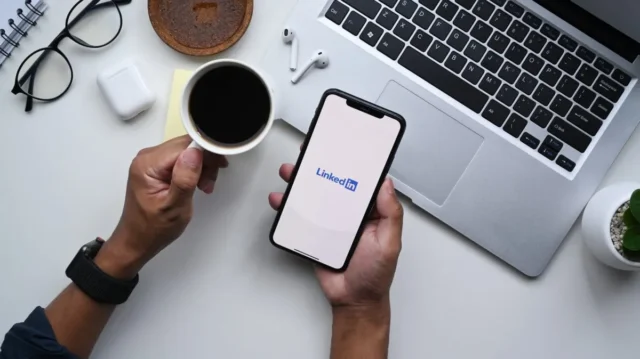In the ever-evolving landscape of professional networking, LinkedIn stands out as a premier platform for connecting with industry professionals, potential clients, and partners. One of the powerful features that LinkedIn offers is LinkedIn Events, which allows users to create, promote, and manage events seamlessly. This blog explores how to leverage LinkedIn Events effectively for business networking, from planning to execution.

Table of Contents
ToggleWhy Use LinkedIn Events?
- Targeted Networking: LinkedIn Events enable you to connect with like-minded professionals and targeted audiences interested in specific topics or industries.
- Brand Visibility: Hosting an event can enhance your brand’s visibility, helping you establish yourself as an authority in your field.
- Engagement Opportunities: Events provide an excellent platform for engaging with your audience, answering their questions, and addressing their needs.
- Lead Generation: LinkedIn Events can be a great source for generating leads, as participants are often interested in your offerings.
Step-by-Step Guide to Using LinkedIn Events for Business Networking
1: Define Your Event Goals
Before creating your event, clarify your goals. Consider the following questions:
- What do you hope to achieve? (e.g., brand awareness, lead generation, knowledge sharing)
- Who is your target audience?
- What topics will resonate with your audience?
Defining clear objectives will guide your event planning and help measure success.
2: Create Your Event
- Log in to LinkedIn: Go to your LinkedIn homepage and click on the “Events” option in the menu.
- Click “Create Event”: Fill in the necessary details, including:
- Event Name: Make it catchy and relevant.
- Date and Time: Choose a date and time that accommodates your target audience.
- Event Format: Decide if it will be in-person, virtual, or hybrid.
- Description: Write a compelling description that outlines what attendees can expect. Highlight key speakers, topics, and networking opportunities.
- Image or Banner: Upload a visually appealing image or banner that reflects the theme of the event.
- Set Privacy Settings: Choose whether your event will be public or private. Public events can be seen by anyone on LinkedIn, while private events are invite-only.
3: Invite Connections and Promote Your Event
- Invite Your Network: Use the invitation feature to send invites to your connections. Encourage them to RSVP and share the event with their networks.
- Share on LinkedIn: Post about the event on your LinkedIn feed, emphasizing its value and why people should attend. Use relevant hashtags to reach a broader audience.
- Utilize LinkedIn Groups: If you are a member of relevant LinkedIn groups, share your event there to attract more attendees.
- Engage with Influencers: Reach out to industry influencers or experts to invite them as speakers or panelists. Their involvement can attract more attendees and enhance your event’s credibility.
Step 4: Prepare for the Event
- Finalize Logistics: If it’s an in-person event, ensure the venue is booked and arrangements for catering or technology are made. For virtual events, choose a reliable platform (like Zoom or Microsoft Teams) and test all technology in advance.
- Create an Agenda: Develop a detailed agenda that outlines the flow of the event. Include time for networking, presentations, and Q&A sessions.
- Engage Attendees Pre-Event: Send reminder messages or emails to registered participants. You can also create polls or discussions in the event feed to encourage engagement.
Step 5: Execute the Event
- Start on Time: Begin your event punctually to respect your attendees’ time.
- Engage Participants: Encourage interaction through Q&A sessions, polls, or breakout discussions. Use the chat feature for virtual events to keep the conversation going.
- Networking Opportunities: Allocate specific time for networking. Consider using breakout rooms for virtual events to facilitate smaller group discussions.
Step 6: Follow Up After the Event
- Thank Attendees: Send a follow-up message to thank participants for attending. Consider sharing highlights from the event or a recording for those who couldn’t make it.
- Gather Feedback: Ask attendees for feedback on the event through surveys or direct messages. Use this information to improve future events.
- Nurture Connections: Continue engaging with participants after the event. Connect with them on LinkedIn, share relevant content, or invite them to future events.
Tips for Success with LinkedIn Events
- Keep It Professional: Maintain a professional tone in all communications and during the event.
- Utilize Visuals: Incorporate visuals and slides to keep participants engaged during presentations.
- Create a Hashtag: Consider creating a unique hashtag for your event to facilitate discussions and visibility on social media.
- Record the Event: If appropriate, record your event and share the video later for those who missed it.
Conclusion
LinkedIn Events are a valuable tool for enhancing your business networking efforts. By creating engaging and well-organized events, you can connect with industry professionals, build relationships, and establish your brand in the marketplace. Follow the steps outlined in this guide to leverage LinkedIn Events for successful networking, and watch your professional connections grow!


No responses yet